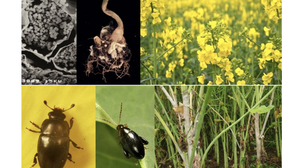Conference on Integrated Control in Oilseed Crops
"Integrated Control in Oilseed Crops: Are we nearly there yet?"
IOBC-WPRS WG ICOC 2024 Dresden
Local organizer: Jutta Ludwig-Müller
Convenor: Małgorzata Jędryczka
Entomology Convenor: Sam Cook
Pathology Convenor: Małgorzata Jędryczka
 © IOBC
© IOBC
Invitation
"Integrated Control in Oilseed Crops: Are we nearly there yet?"
IOBC-WPRS WG ICOC together with International Clubroot Workshop 2024 Dresden:
10–11 September 2024: IOBC-WPRS WG “Integrated Control in Oilseed Crops”
Location: Technische Universität Dresden
12 September 2024 International Clubroot Workshop
Local organizer: Jutta Ludwig-Müller
Convenor: Małgorzata Jędryczka
Entomology Convenor: Sam Cook
Pathology Convenor: Małgorzata Jędryczka

